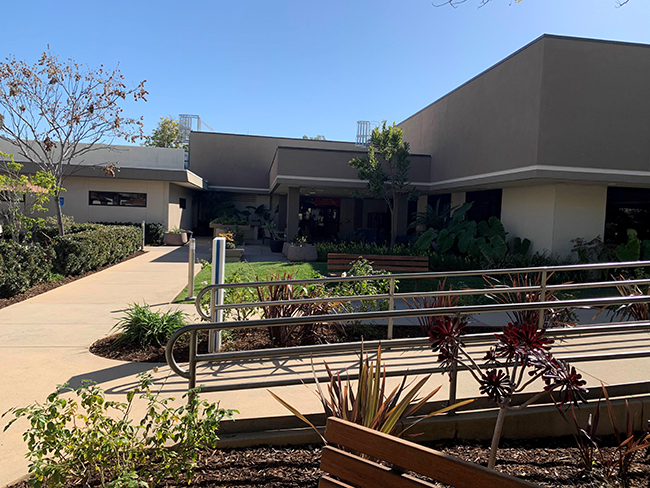
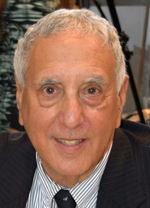
SAN DIEGO—I came home last Tuesday following brain surgery and nearly six weeks of physical rehabilitation with surprising mixed feelings. It was the eve of Nancy’s and my 53rd wedding anniversary, so of course I was excited, especially since because of the Covid pandemic, we had not been able to get near each other, much less share a kiss. But, on the other hand, I felt like a kid at the end of his summer camp session; going home meant leaving behind new friends as well as interesting and enjoyable activities.
Dr. Sammy Abdou, a Kaiser Permanente neurosurgeon of Egyptian heritage, had removed a meningioma from the surface of my brain, leaving a surprisingly small scar that my hair naturally fell over, so that it couldn’t even be seen unless you were staring from some height at the top of my head. I mention his heritage because my subsequent experience at Kaiser and at Sharp Rehabilitation Center brought me into a little United Nations of caregivers, each of them kind, sympathetic, well-trained, and reassuring.
My news from the pathology laboratory was good; although the meningioma had been relatively fast growing, it was not malignant, just atypical. But there were four side effects to the surgery, three of which were temporary and now completely resolved. I suffered incontinence, my blood pressure was quite high, and my hands trembled. The more lasting consequence of the brain surgery was a seeming paralysis of my left leg below the knee. In order for me to walk again, I had to reboot my neuro pathways so that when my brain thought “move,” my left leg would respond to the command.
Kaiser Permanente subcontracts with Sharp Rehabilitation Center in cases such as mine, and after the first week, I was transferred there for a regimen of occupational therapy, physical therapy, recreational therapy, and neuropsychological testing to determine if I had lost any cognitive function. It was almost immediately determined that I did not require speech therapy, big mouth that I am.
Of ethnic interest, there were three fellow Jews with whom I interacted, among a host of health workers whose former nationalities or backgrounds included the Philippines, Mexico, Vietnam, Italy, Holland, and Indigenous North American. My coreligionists included Dr. Ori Schnitzer, who examined me each morning and became a friend; Ilana Rosenthal, who spent much of her life as an Israeli kibbutznik before becoming a nurse in the United States, and Adam Philips, a San Diegan who assists physical therapists and occupational therapists whenever called upon to do so. I’ll tell you a little bit of their stories later in this article.
Most mornings before 6 a.m., I was awakened by a big-hearted woman who I came to call “Sunshine Sally,” so bright and cheerful was she as she assisted me from bed to bathroom and in dressing. Sally, who works the overnight shift, has two young grandchildren whom she loves to take to the San Diego Zoo. She told me that it’s rare for her to get past the flamingo exhibit, so fascinated is her 5-year-old granddaughter by the bright pink wading birds.
I’d get to my wheelchair by 6:30 a.m., only minutes before Tsion, originally from Eritrea, would deliver my breakfast, which had been ordered the day before. About halfway into breakfast, Tsion would pop in again to take my order for that day’s lunch, dinner, and the following day’s breakfast. Because of my tendency toward high blood pressure, I am supposed to have a low-sodium diet. This proved to involve a “negotiation” with Tsion’s computer program on her tablet. “Would you like this? Oh wait, it’s too much sodium, but let’s see, if we take away this or that, we can come in under the limit.” The result of all this was that I usually had chicken or fish for at least one meal a day. Sharp’s kitchen staff knows quite a few ways to prepare chicken, so on some days it might be Mexican style (as part of an enchilada), another day Filipino style (chicken adobo), and yet other days other styles. Breakfast, however, was mostly unvarying; one could have eggs (scrambled, over easy, over medium, over hard, or even hard-boiled), toast or pancakes, hash browns, or perhaps have instead dry or hot cereal.
I’d get about an hour of morning television (CNN or MSNBC in my case) during which Dr. Schnitzer would come by to listen to my heart, lung and belly sounds, and to test my capability to move my left knee, ankle, and toes. “Press down like on the gas pedal,” he’d say. Or “try to lift your toes toward your head.” Over time, I became increasingly accomplished at such exercises, thanks to the 90 minutes of physical therapy and 90 minutes of occupational therapy that I received each day except Sunday.
At 8 a.m., on a typical day, Heather and her clinical student Jennifer (who soon will earn a doctorate in physical therapy) would arrive in my room to conduct me to the gym. Initially, this meant getting up from my wheelchair and steadying myself in a walker. Heather would take a position on one side of me; Jennifer on the other. At the beginning of my rehabilitation, it took supreme effort just to move my left leg. I recall one occasion when I was so tired that after I was returned to my room, I didn’t even have the strength to push myself up from the wheelchair to a walker to transfer to bed.. Luckily, Sharp Rehabilitation Center is equipped for such contingencies. A nurse wheeled into my room a device with pulleys that safely pulled me up and enabled my transfer to the bed. Contrast that early experience with later outings with Heather and Jennifer at my side, and Adam or Dominic, following with a wheelchair during which I walked and walked through the corridors of the Rehab Center. Later still, we went outside to go up and down ramps, up and down stairs, and even to traverse grass and other uneven surfaces. Physical therapy involved not only walking but also mat exercises that strengthened the muscles in my legs and abdomen. Heather and Jennifer were always encouraging and nice, even when correcting some of my mistakes. (For example, I would forget to maximize my balance by keeping my feet a safe distance apart while standing in my walker. )
Later on a typical day, Samantha, a twenty-something occupational therapist with a ready laugh who prefers her nickname of “Sam,” would take me under her wing, although occasionally Ngha (Ni-Ah) and his student Kayley would be scheduled alternatively. As I understand the difference between occupational therapists and physical therapists, the physical therapists help you strengthen and reuse whatever limb or limbs need repair, whereas the occupational therapists help you learn or re-learn how to function as you go through your daily routines. Such tasks that require practice include getting out of bed, dressing, using the toilet, taking a shower, brushing teeth, shaving, opening and closing doors and cabinets, loading and unloading dishwashers, folding laundry, and hanging up clothes, to name just a few. In occupational therapy, one also does a variety of exercises in the gym to strengthen the upper body muscles that one needs to accomplish these tasks. Some of these included using levers or pulleys to lift weights, catching and tossing back a ball, using a rubber ball to knock down pins in an ersatz game of bowling, throwing a ball to a tilted trampoline which bounces the ball right back to you; stretching elastic “thera-bands” in various directions to strengthen different muscle groups – the list of activities seemed to go on and on, with the very variety of tasks keeping workouts fun and interesting. Fine motor skills also were addressed with other kinds of exercises, such as putting pegs into holes and then removing them; picking up coins spread out over a table; walking around the room picking up cones with one hand and reaching across one’s body to place them on a stack held by an attendant, and using cards or multi-patterned dice-like objects to reproduce various patterns.
The late afternoon typically was reserved for recreational therapy, which, thanks to Sharp’s Arts for Healing Project involved groups of patients listening to live music played by Jey, or engaging in arts and crafts led by Sofia. I had the chance to use tiles and grout to design a trivet on one occasion and to make Valentine’s Day and anniversary cards for Nancy on other occasions. Other programs included cooking (I made a stir fry with chicken on a stove top that could be reached from my wheel chair), or simply playing games like Scrabble and Rummy-Que, while wearing our masks and keeping socially distant. Ever-popular recreational therapists Bernadette, Wendy, and Debbie were on hand to move the game boards as needed. In my opinion, the most important aspect of recreational therapy was the opportunity it afforded patients to socialize. Once we got to know each other, we encouraged each other from across the gym as we individually engaged in therapy sessions. One of the most inspirational patients there was named Claire, a 19-year-old who was about to start college when she experienced a debilitating ailment that robbed her of some neuro function. Though she clearly was having a tough time, Claire never complained and always had a smile and words of encouragement for other patients.
Nurses and Certified Nursing Assistants along with a Charge Nurse rotated over three shifts, and each one, when and if there were sufficient time, had an interesting story to tell about his or her life. Although there are some male nurses and nursing assistant — three of whom are named “Ed” — most of them are women. I very soon became used to them assisting me in what previously would have been private moments. So often did one or the other of them see me naked (while showering, toileting, or dressing, that I quickly became used to it; physical modesty in a hospital or a rehab center being pointless.). I joked to my wife Nancy that more women had seen my genitals over the last couple of weeks than in my previous 75 years. “So long as all they do is look,” she responded cheerfully. And, of course, everything was quite proper, all joking aside.
As mentioned before, I also was administered a series of tests to determine if the brain surgery had left me mentally impaired. I repeated number and letter sequences back to Macy, my tester; used a pencil to copy patterns, or at least try to reproduce those that I had seen, but were no longer in front of me; and answered questions about stories that were read to me. Later Dr. Barranger interpreted the test results to me. The bottom line: No noticeable cognitive impairment. Given that I am a reporter and writer, this was good news indeed.
Now, as promised, let me tell you a little about my three fellow Jews who I met during my rehabilitation.
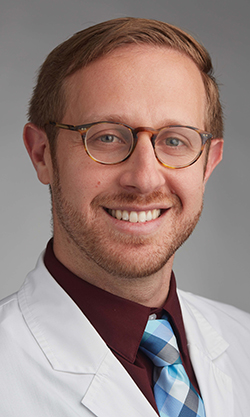
(Photo: Sharp Rehabilitation Center)
Dr. Ori Schnitzer – Born and raised in the University City neighborhood of San Diego, he is the son of Israeli immigrant parents (Hadassah and the late Yigal) who owned and operated the Hagen-Daz ice cream store in La Jolla Village, where as a youth Schnitzer worked behind the counter. On one side of his family were early Zionists, who settled in Israel in the early 1900s; on the other were Holocaust survivors who arrived there in the mid-20th century. Schnitzer has a mentor in his older brother Ron, who is a Los Angeles-based cardiologist, and a sister Tali, who resides in San Diego.
He attended Chabad Hebrew Academy in Scripps Ranch through eighth grade, then La Jollla High School before going on to UCLA, where he began as a major in North African and Middle East Studies but soon switched his major to Biochemistry, which led to his interest in medicine. After graduation in 2007, he went to Tel Aviv University’s Sackler School in an American-credentialed program, where he said he received an excellent medical education, visited Israeli relatives, and made life-long friends, some of whom he continues to speak with on a regular basis.
After completing that program in 2013, he interned at Elmer’s Hospital in Queens, New York, and a year later began a three-year residency in Rehabilitation Medicine at the joint program of the University of Miami, Florida, and Jackson Memorial Hospital. Upon completion of that, he stayed an extra year for training in Spinal Cord Injury Medicine. He said he chose the field of rehabilitation medicine because, unlike other disciplines, “you really get to know your patients, who may stay with us anywhere from a week to perhaps two months.” In Rehab Medicine, he added, one deals with varied aspects of medicine, particularly neurology and orthopedics. Schnitzer moved back in 2018 to San Diego, where he joined the Sharp Rehabilitation Center’s staff, and also has privileges at the Veterans Administration Hospital in La Jolla.
“Our goal is to provide the best medical care for our patients to get them home in a safe, expeditious fashion,” Schnitzer said. “At Sharp, everyone who is here wants to help. That’s what we want to do, and if ever we don’t know how to help you, we find someone who can help you. I think part of the culture here is really caring and going beyond just the basics. We try to make everyone’s stay here memorable for positive reasons by taking extra steps to make everyone feel they are part of the Sharp Family.”
“More than any discipline in medicine,” he added, “I think Rehab features an interdisciplinary team. The doctor, in a sense, is the leader of the team, but we are all kind of equal in that we each see the patient from a different light. The social worker will see the social aspect of the care; the therapist will focus on mobility; the doctor looks at the medical perspective… Sometimes nurses who spend more time with the patients may spot something that the doctor didn’t see… So we can all bring our vision. We have meetings once a week to review the patient’s progress with the whole team, and every other week we have conferences with the patient’s family.”
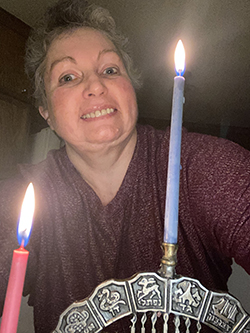
Ilana Rosenthal – The daughter of a Bulgarian mother and Romanian father who met in Israel, Rosenthal was raised in a children’s house at Kibbutz Shamir in the Galilee. As a child, her duties included tending to the garden and looking after small animals. “We always had some duties, but not like the grownups,” she recalled. After her last year of high school which coincided with the 1973 “Yom Kippur War,” she spent a year learning Arabic and then entered the Israel Defense Forces to serve for two years in an intelligence unit. Following that service, she was “drawn to the idea of starting a new kibbutz,” which she did at Kibbutz Geshur on the southern Golan Heights which had been captured from the Syrians. Both Shamir and Geshur kibbutzim were initially agricultural, but today Geshur is also involved in the manufacture of wires in association with Kibutz Ein Dor. The people she joined in building the new kibbutz of 40 to 50 families were fellow members of Hashomer Hatszair, a Socialist Zionist movement whose name roughly translates as “the young guards.” “In our kibbutz movement,” she told me, “we kept saying that our kibbutz would not be a barrier to peace. If ever there is a peace agreement with Syria and we need to leave that place, we will do that, but in the meantime, we were there to show presence and to be part of the safety of Israel.” The kibbutz is a “real democracy,” she shared. “every year we choose who will be the secretary of the kibbutz, and who will be the manager, and who the financial, director, and things like that. I was secretary of the kibbutz a couple of times; I also worked in the field some years, and for a couple of years I was in charge of the agricultural part of the kibbutz, where we grew corn and wheat. Then I worked in the kitchen, I cooked, and was in charge of the kitchen management. I did everything!” “Everything” also included being sent by the kibbutz to an Israeli nursing school, providing her with the tools for her future American occupation.
In 1998, she moved with her now ex-husband and three children to the small Dutch Caribbean Island of Saba, where she worked as a nurse while he went to medical school. While there, she met Queen Beatrix of the Netherlands, who was touring the island in the wake of a hurricane. Subsequently, they moved to Kansas City, Kansas, where she studied English, and passed the American nursing test, before taking a position at a rehabilitation center in neighboring Kansas City, Missouri. After that, they moved to Rochester, Minnesota, where her husband trained, and she spent six years as a nurse at the Mayo Clinic’s rehabilitation center. After he finished his nephrology residency, the family moved to San Diego, where his parents lived. In 2008, she began work as an overnight shift nurse at the Sharp Rehabilitation Center. One of her children, Irit, is also a nurse, at another Sharp facility.
Rosenthal had started as an overnight nurse in Kansas City when her children still were young and her then husband had very long and demanding hours during his medical training. That shift became habit forming. “The first two hours of the shift are always very busy because before people go to sleep, your work is to give them their medications, or to take care of any wounds (cuts, abrasions) in a really short time period. But after that, it can be quiet, but not always.” During the night, immobile patients need to be turned in bed to avoid bed sores, and others may need to be helped to the bathroom. After patients awaken, nurses instruct them in various ways they can take care of themselves.
On March 2, Rosenthal will retire from nursing, just in time for the birth of her son Edan’s first child. “I will become a safta!” she said excitedly. In addition, “I want to maybe volunteer at the Jewish Family Service food bank, and perhaps get a part-time job as a vaccinator. I am looking forward to the next chapter of my life,” she said, but at the same time she will miss her coworkers very much. “We have a group that has been together for a long time,” she amplified.
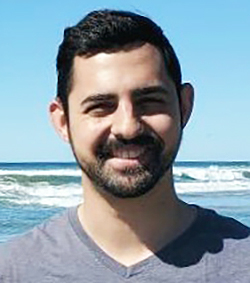
Adam Philips — He grew up in the Mira Mesa neighborhood of San Diego, living “in the same house from age zero to when I went to college.” His father, whose heritage is Indonesian with a touch of Filipino, had been born in the Netherlands but was moved with his family to the United States at age 1 ½. His mother is an Ashkenazi Jew of Russian and Polish background, whose grandparents immigrated to the United States through Ellis Island. Given that one parent was raised as a Roman Catholic and the other as a Jew, the holidays of both religions were observed in the Philips household, “but I tended to side a little bit more with the Judaism aspect of the things that I learned when I could compare the two. … One of the big things for me was the openness and the acceptance that I felt from the Jewish religion and the people that I would come across who were also Jewish.”
Philips attended Dingeman Elementary School, Marshall Middle School, and Scripps Ranch High School before attending college at UC Santa Barbara and then suspending his schooling for a few years while continuing to live and work in the Santa Barbara area. After moving back here, he picked up some units at Mesa and Miramar Community Colleges, and then earned a bachelor’s degree in kinesiology (movement and chemistry of the body) from the Temecula extension branch of Cal State San Marcos.
“Pretty much since high school, I’ve been focused on physical therapy,” he told me. He explained that his mother is a teacher and his father is an attorney for Child Protective Services, “so I was taught to give back and to help people. I was an athlete (soccer, long-distance running) in high school who got injured a lot and went through rehab, so I grew up knowing I wanted to give back, perhaps as an athletic trainer working for a professional team.” A physiology class in high school “opened my mind to the human body and really in-depth biology, and I was hooked” on the field of physical therapy.
Philips began work at Sharp Rehabilitation Center about 18 months ago as an “in-patient” therapy aide. “A lot of my job is maintenance, so at the gym where a lot of the therapy occurs, I am cleaning, I am maintaining appointments, I am organizing, doing administrative work like ordering things we might be getting low on, like lotion. I do scheduling in the mornings. I make sure that patients get set up with the right equipment; make sure that the wheelchairs are functioning properly. In addition to all that, and what I try to focus on, is assisting in patient care. Whenever a patient is working with a therapist and therapists can’t do something on their own, they will ask for my assistance. Wheelchair-follows, or sometimes I am hands-on with the patient, if the patient needs someone to steady them or to help balance them. Sometimes I am assisting in ball tosses; if the therapist needs to hold onto the patient, then I will be the one who tosses the ball, or hit a ball back and forth. One of the things that they are really good at in occupational therapy is turning things into games or challenges that are actually therapy, even though you don’t necessarily think of them that way.”
He described his work at Sharp as a “resume builder” for an eventual application to physical therapy school. “The application process begins in August and I will be applying to several physical therapy programs,” he said.
*
Donald H. Harrison is editor of San Diego Jewish World, which has been in hiatus since January 15, the day of his surgery. He is now in the process of deciding how best to turn over editing responsibilities to someone else, so that he may concentrate on writing.
So glad to hear that the surgery was successful with no serious side or after effects! May you live to 120!
I am so glad you are doing okay! What a wonderful article about all of the people who helped you in your recovery!
Thanks for letting all of your friends and and followers know the update. May you and Nancy continue to celebrate many years together in good health!
I had a similar tumor but mine was growing on my thoracic spine instead of the brain. Dr. Abdou was also my neurosurgeon and he did an outstanding job completely removing the tumor. He did the surgery on a Sat., the 1st day he got back from vacation. I was sent to a nursing home for about 3 weeks to get my strength back ( I hadn’t been able to even stand before) & then was also sent to Sharp Rehab. I improved so much in my 2 weeks there that it was amazing. Fortunately my experience was before covid, so in that regard I was luckier than you as visits from friends & my husband helped immensely in passing time. I am so grateful for the quality of care and caring I received. I really enjoyed reading your story.
Don,
Well done! Your recovery and the good-hearted account of your rehabilitation and those who’ve helped you. Your writing constantly reframes people and events in a positive light. In your person and your pen, the glass is never half empty, it’s always half full. May your cup always runneth over with the goodness in health, family and the your journalism embodies.
–Yaakov and Devorah Shore
I believe it might be Elmhurst Hospital..
Continue to recover well…
https://www.yellowpages.com/queens-ny/east-elmer-s-hospital
Don, it’s so good to have you back and healthy! I can’t believe all the notes you must’ve been taking throughout your difficult ordeal. Ever the journalist, no matter what’s going on. Great account and descriptions. Glad you had such a positive experience growing from such a negative one. And camp, yet! (OK, rec therapy.) Kol hakavod. Enjoy being home and in good health!
Baruch Haba. Welcome back, Don. It’s great again to read your daily infusion of news and views which broaden our knowledge and deepen our understanding of what’s happening in the world and how it affects Jews and Judaism. And what better way to begin again than to relate with your characteristic color and candor what you have experienced while you were recuperating in “galut”.
Wonderful news. So good to see you in my inbox! Our community is grateful to have you back. Mat you continue to progress and enjoy good health and time with Nancy and other loved ones
Very Glad to have you back…..& Healthy!
May you have a complete and speedy recovery.
So happy you’re healing and back! You were missed.
This is such good news! I’d been a bit concerned about you, given how much time had passed without word of the surgery’s outcome (I don’t have access to Facebook, because I neither have nor want an account).
May you continue to grow stronger and feel better with each passing day.
Very interesting (but a bit too long for my taste). I’m saddened, too, to see how many former Israelis have left for the ‘new promised land’. The main thing, though, is that you’re doing well. Keep up the good work!
Fabulous shout out for what sounds like a beautiful facility and staff
So happy you are up and about and on the road to recovery b